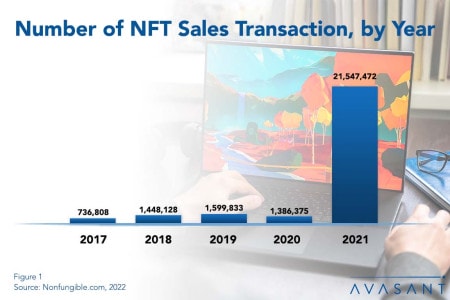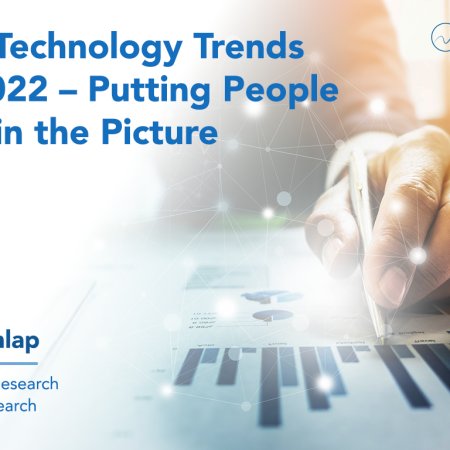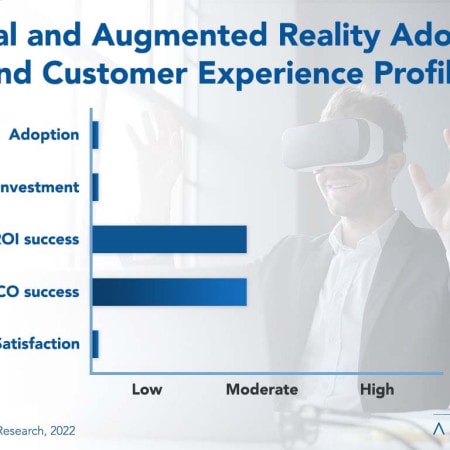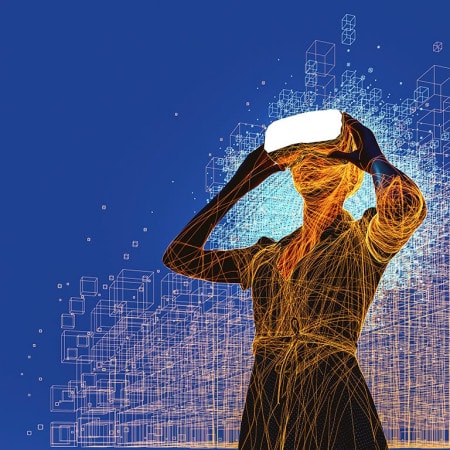-

Cross-Border Commerce, Digital Currencies, and the Future of Money
Traditional payment systems are proving to be too slow to accommodate increasing levels of e-commerce and cross-border transactions. And demands for faster payment processing will only increase as commerce enters the omniverse. This Research Byte outlines the factors driving the need for speed in financial transactions. We examine the benefits and drawbacks of one kind of digital currency—cryptocurrencies—and what the future of money could look like. We conclude with recommendations for enterprises to understand and prepare for the future of money.
August, 2022
-

NFTs: More Than Just Digital Art
Non-fungible tokens (NFTs) have been a hot topic as art, fashion, video games, and social influencers have embraced the technology to sell one-of-a-kind digital objects. But enterprises, outside of a few specific industries, have largely neglected NFTs. Nevertheless, many companies should consider their benefits. This Research Byte explores this emerging technology.
April, 2022
-

Four Technology Trends for 2022—Putting People Back in the Picture
IT organizations everywhere have been tasked with leading the digital transformation. But that transformation seems pretty bleak—artificial intelligence (AI), machine learning, robotic process automation, and blockchain. Where are the people in your digital transformation? When you look back on what you accomplished in 2022, will you be able to say you made things better for your customers? How about your users?
February, 2022
-

Virtual and Augmented Reality Show Great Promise Despite Slow Mainstream Adoption
Virtual reality (VR) and augmented reality (AR) are emerging technologies that will change the nature of work in many industries. By allowing workers to map out solutions before implementing them in the real world, they minimize human errors and increase worker efficiency. They also support a hybrid work environment, as more use cases emerge for training and collaboration. This Research Byte summarizes our full report, Virtual and Augmented Reality Adoption Trends and Customer Experience.
February, 2022
-

The Quantum Revolution in India: Betting Big on Quantum Supremacy
In the last decade, quantum technologies have transitioned from science fiction to real-world enterprise trials. Quantum computing has evolved, providing real-time analytics, faster decision-making, better forecasting, quicker prototyping, and new products creation. India aims to address issues concerning national priorities using quantum technologies. The government has planned an over USD 1B outlay to build a quantum-enabled infrastructure. The infrastructure will focus on converting theoretical aspects of quantum into commercial prospects.
February, 2022
-

5G and the Future of Healthcare
5G promises to be 10—20 times faster and with less latency than the previous generation (4G), enabling new capabilities and transforming applications in a variety of industries. However, the cost of 5G is enormous. Healthcare, a notoriously laggard sector, has the opportunity to take a big step forward if it can choose the right applications to begin its investment.
October, 2021
-

Robots on The Rise: RPA Investment Grows
Robotic process automation (RPA) is rapidly maturing, and it is gaining popularity as a way to make workers more productive, allowing them to spend more time on higher value tasks. Because people are the greatest cost in most companies, making workers more productive can do wonders for the bottom line. This Research Byte provides a summary of our full report on RPA adoption trends and customer experience.
June, 2021
-

Quantum Computing Coming Sooner Than You Think
The slow pace of quantum development has inspired enterprises to take a “wait and watch” strategy for quantum applications. Increasing the number of qubits while reducing the noise or error correction is the most critical challenge in quantum computing. However, the next five years will be crucial in the development of quantum computers. So now is time to build partnerships and identify pilot programs for when quantum computing becomes affordable and accessible to your size and type of organization.
May, 2021
-

Artificial Intelligence: Should Robots Have Rights?
In 1950, Alan Turing proposed a test for the ability of a machine to exhibit intelligent behavior that is indistinguishable from that of a human being. Over the 70 years since, artificial intelligence has become more and more sophisticated, and there have already been claims of computers passing the Turing Test. As AI applications, and especially AI-enabled robots, continue their evolution, at what point do humans begin to, in fact, perceive them as living beings? And as this perception takes hold, will humans begin to feel obligated to grant them certain rights?
October, 2020

 Grid View
Grid View List View
List View